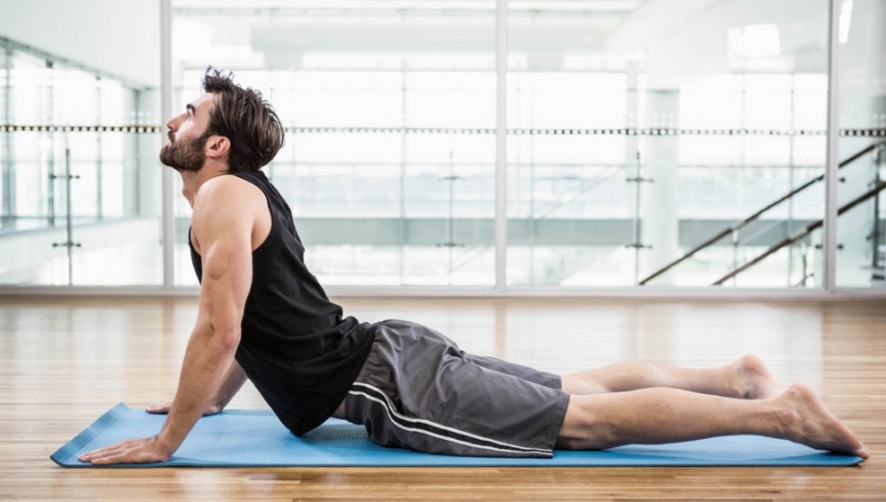
Even if you’re suffering from back discomfort, it’s not a good idea to snuggle up in your bed. Resistance training is a better option instead. How to do it? We’ll walk you through it.

Back pain is a common problem in the United States, and many people are hesitant of doing anything that may worsen their symptoms, such as resistance training. Disa Hatfeld, PhD, Associate Kinesiology Professor and Kinesiology Department Chair at the University of Rhode Island, argues that for the ordinary individual with back pain, this is unhelpful.
Strength training, according to Dr. Hatfield, a former world-class powerlifter, has been shown in several studies to relieve chronic pain. Weight training “also lowers [back pain] to a larger degree than aerobic exercise, or simply being active,” according to the research, she adds.
Dr. Hatfield thinks it’s a mistake to put off strength training because you’re unsure whether to use free weights or machines. Starting a resistance training regimen, no matter what sort, is best done as soon as possible. In order to choose the best path, you need know the following information.
A comparison between free weight and machine weight
Dumbbells, barbells, and even common household things like gallon jugs of water are examples of free weights that have the most potential for reward, but also the highest potential for injury..
Using free weights in the gym may help you build strength, but they can also help you perform more effectively outside the gym. Dr. Hatfield claims that lifting free weights without discomfort may enhance your quality of life.
“They are really pleased when they go on vacation and they can put their bags in the overhead bin, or carry their groceries up the stairs,” she says, citing research done on older persons.
Being in control of your form and balance when lifting free weights means your newfound strength is more transferable to everyday tasks than it is with machines. The transverse abdominis must be contracted in unison with your stabilising muscles while using free weights. People with terrible backs may greatly benefit from this, depending on the underlying source of their discomfort.
Compound exercises, which target more than one muscle group at a time, may be performed more easily using free weights. Moreover, according to Dr. Hatfield, they seem to have a stronger impact on back pain than single-joint exercises do. Sitting leg press is not a compound exercise, since it just involves movement in the knee joints, while squatting requires action in both hip and knee joints.)
Because of their scary appearance, many individuals avoid using free weights. Isn’t it obvious that exercising if you’re apprehensive is a waste of time?
There is some truth to the notion that free weights might be dangerous. You’ll need to learn more about proper form before you can use them properly. When using free weights, the chance of injury is higher, especially if you’re not paying attention to your technique or aren’t aware of any errors.
Accessibility is the primary advantage of machines
When it comes to getting started with weightlifting, many people choose to utilise machines. Even while they won’t offer you the same amount of bang for your buck as lifting free weights, machines may often be used to rapidly complete a circuit (a sequence of various exercises). Plus, avoiding a free weight workout in favour of a machine circuit is always preferable.
Priority Is Given to Security
It’s imperative that you see a doctor before beginning any exercise regimen, including going to the gym. Dr. Hatfield explains that, despite the overwhelming evidence that strength training is beneficial in the therapy of back pain, studies often involve people with nonspecific back pain. “Researchers don’t want to handle some circumstances” to prevent accidentally harming study participants. Scoliosis, slipping vertebra, and herniated disc are all examples of this.
Obtain specific instructions from your healthcare professional as to what, if any, workouts you should alter or avoid. If you decide to follow Dr. Hatfield’s advice and employ a personal trainer, be sure to let them know you followed his advice. And if your personal trainer doesn’t ask for or isn’t sensitive to these specifics, look for someone else to work out with instead.
A good personal trainer will take every care to keep you safe while you work out. As recommended by Dr. Hatfield, look for a qualified personal trainer who has qualifications from the American College of Sports Medicine or the National Strength and Conditioning Association.
Also examine your personal trainer’s experience and the continuous education they’ve undertaken. Geriatrics and people with impairments are two specialties of certain trainers. Experienced physical therapy assistants and sports trainers are more likely to have dealt with patients who suffer from back pain in the previous job setting.
Having a personal trainer isn’t only about structure and responsibility; it’s also about keeping you safe. When working out with weights or machines, proper form is essential no matter what you’re doing. According to Dr. Hatfield, in most cases, it isn’t the exercise itself that creates problems, but rather the act of completing an exercise incorrectly that does. There is a direct correlation between increasing weight and an increased risk of injury or a flare-up of back discomfort.
To ensure perfect form, students benefit greatly from formal teaching, which includes demonstrations in person and brief verbal and/or physical cues (such as a gentle touch to the low back or a reminder to maintain your back flat).
As an example, Dr. Hatfield suggests that your trainer can use the phrase “pinch my hands” while completing a deadlift to remind you to maintain your shoulder blades back. Despite the value of instructional YouTube videos, nothing replaces the one-on-one interaction with a competent expert, whether it’s a personal trainer, small group training, or a group fitness class.
The best exercises to keep your back in shape.
Squats, deadlifts, and core exercises are three of the most important workouts to keep back discomfort at bay, regardless of whether you use free weights or machines. If you want to see the greatest effects, do these exercises at least twice a week, with the final few repetitions being particularly taxing.
According to Dr. Hatfield, squats have a terrible reputation for causing knee problems. She explains, “We’ve done the study. A hefty barbell isn’t necessary for squatting or any other exercise to be successful.
In the end, your body will develop stronger and less prone to back discomfort if you challenge it adequately, whether it’s with body weight, resistance bands, dumbbells, or even wearing a backpack.
It takes dedication to do strength training, but the results are well worth it. It doesn’t matter whether you use machines or free weights; the key to success is to exercise regularly and with proper technique.







